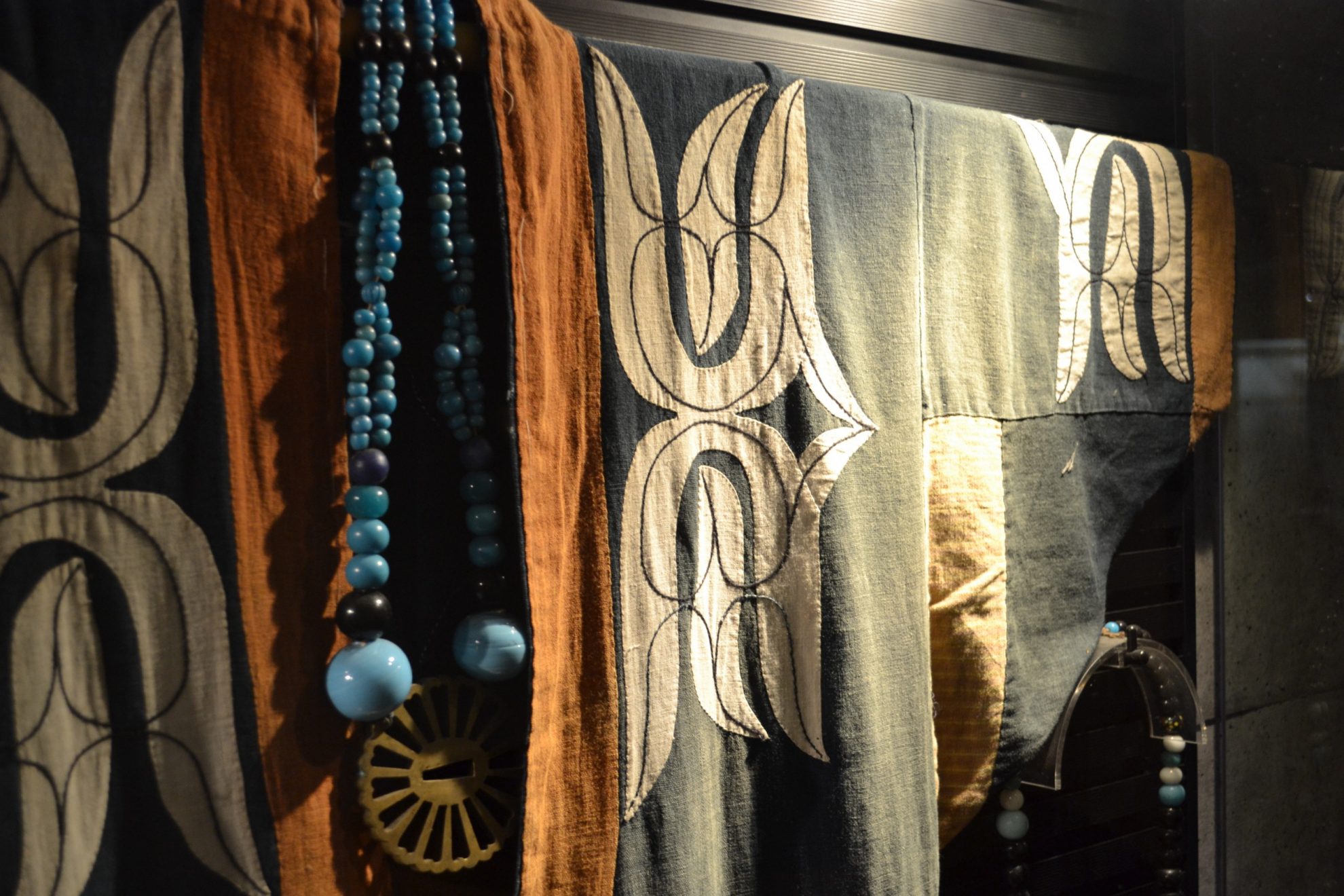Our reading list was developed in collaboration with one another as a component of our independent research. Each week, we had one shared reading, and then Adele and Julianne completed individual readings on their own to bring to the discussion. We often discussed a wide variety of visual examples in conjunction with each reading.
Representing the Indigenous as Self and Other (Method)
Charlotte Eubanks and Pasang Yangjee Sherpa, “We Are (Are We?) All Indigenous Here, and Other Claims about Space, Place, and Belonging in Asia,” Verge: Studies in Global Asias 4, no. 2 (2018): vi-xiv.
[Comparative Example 1] Deborah Poole, “Introduction,” Vision, Race, and Modernity: A Visual Economy of the Andean Image World, 3-24. Princeton: Princeton University Press, 2007.
[Comparative Example 2] Fatimah Tobing Rony, “Introduction” and “Seeing Anthropology: Felix-Louis Regnault, the Narrative of Race, and the Performers at the Ethnographic Exposition,” in The Third Eye: Race, Cinema, and Ethnographic Spectacle, 21-43. Durham: Duke University Press, 1996.
Japan (Defining Japaneseness; Depicting the Other)
Tessa Morris-Suzuki, “Introduction,” “Japan,” and “Race.” In Re-Inventing Japan: Time, Space, Nation, 3-8; 9-34; 79-109. Armonk, NY: M.E. Sharpe, 1998.
Michael Weiner, “Self’ and ‘Other’ in Imperial Japan,” in Japan’s Minorities: The Illusion of Homogeneity. London: Routledge, 2009.
John Lie, “Modern Japan, Multi Ethnic Japan,” in Multi-Ethnic Japan, 83-110. Cambridge: Harvard University Press, 2001.
Japan: Ainu
Tessa Morris-Suzuki, “Performing Ethnic Harmony: The Japanese Government’s Plans for a New Ainu Law,” The Asia Pacific Journal | Japan Focus 16, no. 2 (November 1, 2018), https://apjjf.org/2018/21/Morris-Suzuki.html
Lisa Hiwasaki. “Ethnic Tourism in Hokkaido and the Shaping of Ainu Identity,” Pacific Affairs 73, no. 3 (Autumn 2000), 393-412.
Ann-Elise Lewallen, “The Gender of Cloth: Ainu Women and Cultural Revitalization,” Beyond Ainu Studies: Changing Academic and Public Perspectives. Honolulu: University of Hawai’i Press, 2014.
Japan: Zainichi Korean
Sonia Ryang, “Visible and Vulnerable: The Predicament of Koreans in Japan,” in Diaspora without Homeland: Being Korean in Japan, edited by Sonia Ryang and John Lie, 62-80. Berkeley: University of California Press, 2009.
John Lie, “Preface,” in Zainichi (Koreans in Japan): Diasporic Nationalism and Postcolonial Identity, ix-xiv. Berkeley: University of California Press, 2008.
Suh Kyungsik, “Japan Through the Eyes of a ‘Quasi-Refugee’,” Asia Pacific Journal: Japan Focus 1, issue 2, (February 2003).
Young Min Moon, “Citizenship and North Korea in the Zainichi Korean Imagination: The Art of Insook Kim,” Asia Pacific Journal: Japan Focus 13, issue 5, no. 3 (February 2015).
Japan: Nikkeijin (Japanese Diaspora in S. America and US)
Takeyuki (Gaku) Tsuda, “Japanese-Brazilian Ethnic Return Migration and the Making of Japan’s Newest Immigrant Minority,” in Japan’s Minorities: The Illusion of Homogeneity, #-#. London: Routledge, 2009.
Takeyuki (Gaku) Tsuda, “Domesticating the Immigrant Other: Japanese Media Images of Nikkeijin Return Migrants,” Ethnology: An International Journal of Cultural and Social Anthropology XLII, no. 4 (Fall 2003), 289-306.
Takeyuki (Gaku) Tsuda, “Disconnected from the ‘Diaspora’: Japanese Americans and the Lack of Transnational Ethnic Networks,” Journal of Anthropological Research 68, no. 1 (Spring 2012), 95-116.
Taiwan: Representations by Others
Barclay, Paul D, “Introduction: Empires and Indigenous Peoples, Global Transformation and the Limits of International Society,” in Outcasts of Empire: Japan’s Rule on Taiwan’s “Savage Border,” 1874-1945, 1-40. Oakland: University of California Press, 2018.
Barclay, Paul D, “The Geobodies with a Geobody: The Visual Economy of Race Making and Indigeneity,” in Outcasts of Empire: Japan’s Rule on Taiwan’s “Savage Border,” 1874-1945, 190-249. Oakland: University of California Press, 2018.
Barclay, Paul D, “Tangled Up in Red: Textiles, Trading Posts, and Ethnic Bifurcation in Taiwan,” in Outcasts of Empire: Japan’s Rule on Taiwan’s “Savage Border,” 1874-1945, 161-189. Oakland: University of California Press, 2018.
Taiwan: Representing the Indigenous Community from Within
Marzia Varutti, “Crafting Heritage: Artisans and the Making of Indigenous Heritage in Contemporary Taiwan,” International Journal of Heritage Studies 21, no. 10 (December 2015), 1036–1049.
Chun-Liang Chen, “The True Native Beauty of Taiwan–An Extensive Aboriginal Art Collection,” International Journal of Arts 3, no. 2 (2013), 18-29. http://article.sapub.org/10.5923.j.arts.20130302.02.html
China: Ethnic Classification
Thomas S. Mullaney, “Introduction,” in Coming to Terms with the Nation : Ethnic Classification in Modern China, #-#. Oakland: University of California Press, 2011.
Thomas S. Mullaney, “Counting to Fifty-Six,” in Coming to Terms with the Nation : Ethnic Classification in Modern China, #-#. Oakland: University of California Press, 2011.
Susan K. McCarthy, “The Bai and the Tradition of Modernity,” in Communist Multiculturalism : Ethnic Revival in Southwest China, 100-129. University of Washington Press, 2009.
China: Representations/Categorization of Various Indigenous Groups
Susan D. Blum, “Introduction: Against Authenticity: Self, Identity, and Nation Building” and “China’s Minorities through Han Eyes: A Preliminary Sketch,” in Portraits of “Primitives”: Ordering Human Kind in the Chinese Nation, #-#. Rowman & Littlefield Publishers, 2000.
Susan D. Blum, “The Fetishized Ethnic Other: the Dai” and “Almost Us: the Bai Next Door,” in Portraits of “Primitives”: Ordering Human Kind in the Chinese Nation, #-#; #-#. Rowman & Littlefield Publishers, 2000.
Susan D. Blum, “Resistant Disliked Ethnic Others: Wa, Zang, and Hui” and “Colorful, Harmless, Ethnic Others: Naxi and Yi,” in Portraits of “Primitives”: Ordering Human Kind in the Chinese Nation, #-#; #-#. Rowman & Littlefield Publishers, 2000.
Photo credit: Photograph of an Ainu retara kapara amip robe taken at the Nibutani Ainu Culture Museum by Prof. Spiker in 2011. Made with elm bark, applique, and embroidery.
